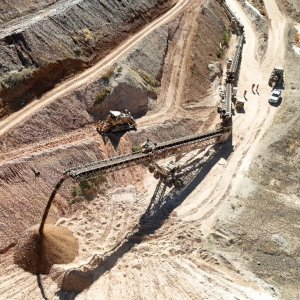Learn from International Best Practices

STORY INLINE POST
Q: What are the major risks that infrastructure companies face around the world?
A: The major risks are experienced more by investors in the private and public sector than by infrastructure companies themselves because the owners are the ones who pay the cost overruns of a project. Risk mainly arises from a lack of planning, an improper estimate of costs or the extension of a deadline. The largest infrastructure projects normally finish later and with a larger budget than expected. Projects equally struggle to acquire enough property to build versatile infrastructure projects such as highways and railways.
It is important to create forums where both the public and private sectors can discuss how to improve the tendering process to avoid these situations and to learn from international best practices. Countries like the UK realize the importance of including private companies throughout the tendering process. They collaborate with companies to create a financial model for projects in a preparatory stage instead of releasing tenders without previous consultancy. It is a model that promotes the mitigation of risks and transparency that Mexico could incorporate.
Q: To what extent would a decentralized agency that can supervise tenders in Mexico be successful?
A: A decentralization of the planning process is a phenomenon that we are seeing around the world. It promotes the inclusion of the private and public sectors and could even include the academic sphere. Construction requires technical expertise more than political. A decentralized agency would work as a hybrid of knowledge, allowing us to take advantage of the knowledge of prestigious universities in Mexico. It would help promote a more unified and long-term perspective of Mexico’s infrastructure projects. Mexico could learn from the UK model. The UK already has two large agencies: the Infrastructure and Projects Authority and the Major Projects Authority. The former is part of the Cabinet Office and HM Treasury, and works like the Mexican Investment Unit of the Ministry of Finance. The latter works as a hybrid that helps create the project pipeline. The planning cycle of an infrastructure project is quite long and it can take up to 10 years before the first brick is placed. The true lifecycle of large infrastructure projects is not aligned with the six-year administrative rotations in Mexico. On one hand, presidents are worried about leaving a legacy after a six-year term; on the other hand, projects require almost 30 years to include a proper planning and construction process. A decentralized planning model would help create a more long-term view of the industry.
Q: How does Hill International participate with both the private and public sectors?
A: Private projects make up 95 percent of our portfolio in Mexico. We find it hard to attract public projects because they require us to have some already in our portfolio. Hill International has tried to participate in a wide range of PPP projects, from water to highways, but the lack of PPP experience in Mexico inhibits our entry. In many cases, we are not permitted to use our international experience with public projects as a corporation because our legal entity in the country is labeled as Mexican (Hill International de México). For instance, our branch in Holland has experience working in metros but Mexican authorities do not accept this because our presence in Mexico is through a company with a slightly different name. It is hard to gain the trust of the authorities and for this reason we stick with the private sector. We focus on residential, office and commercial buildings in Mexico. Hill International has a large team of engineers working onsite and helping administrate the projects. We help our clients connect with construction companies and employees.























